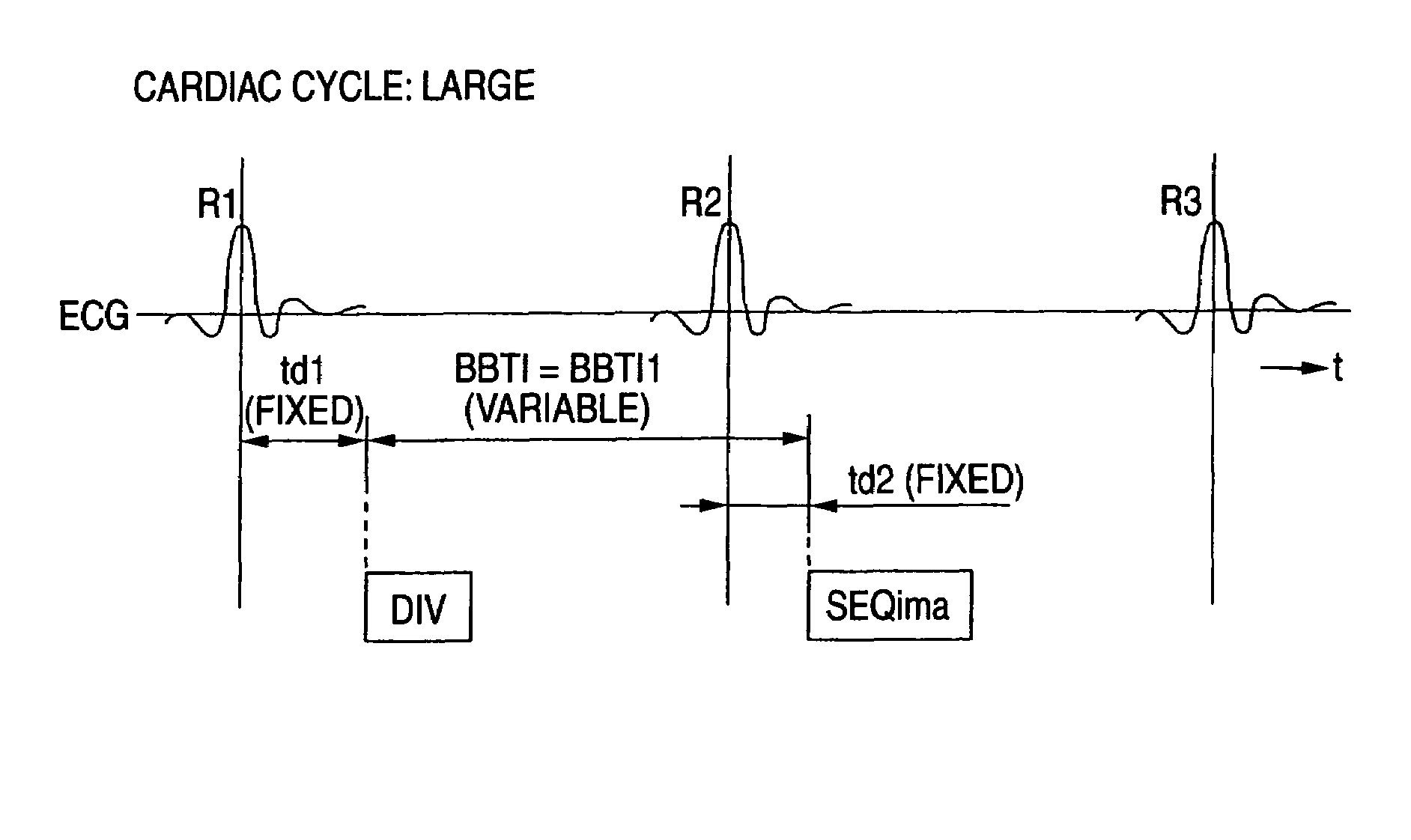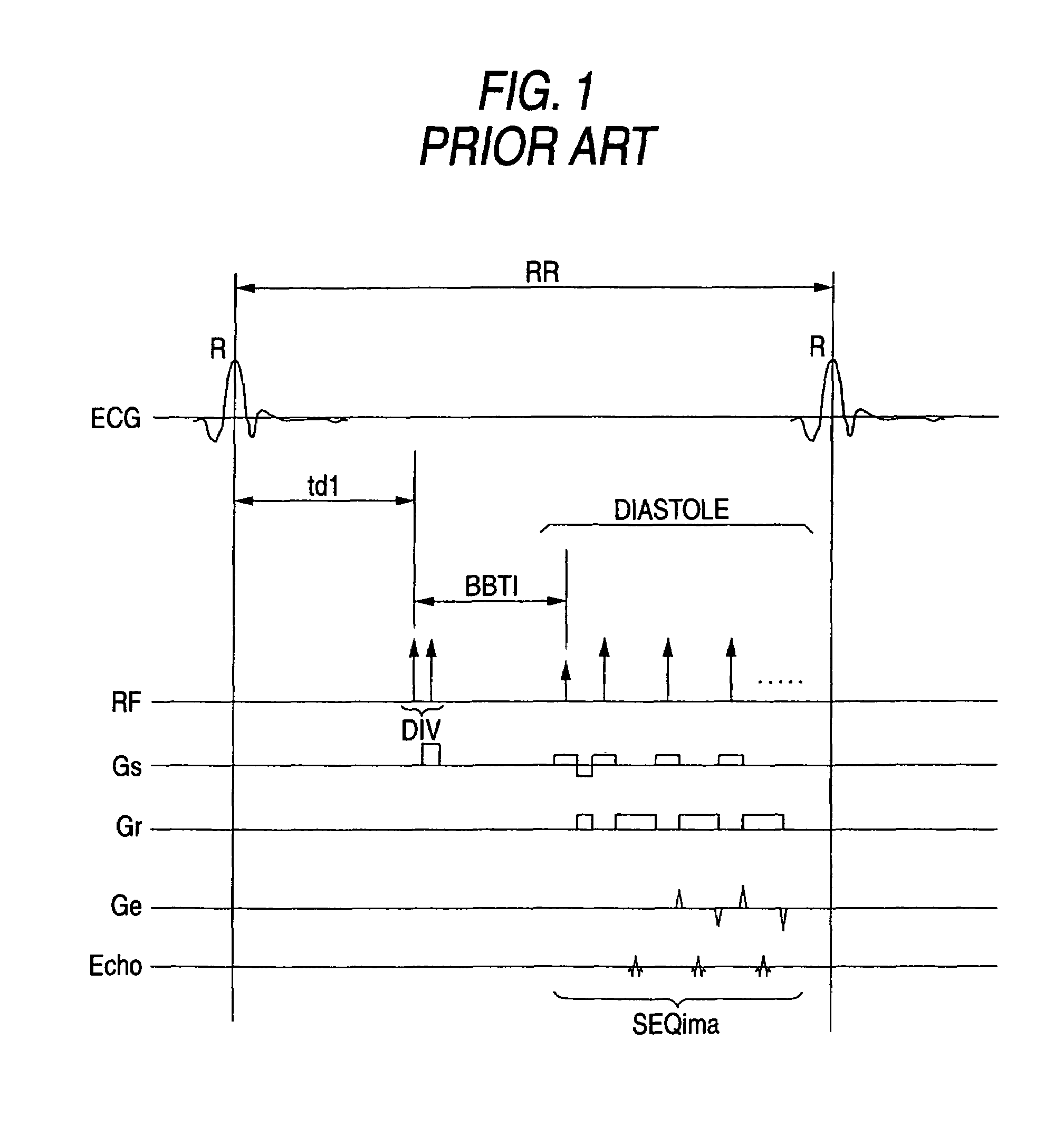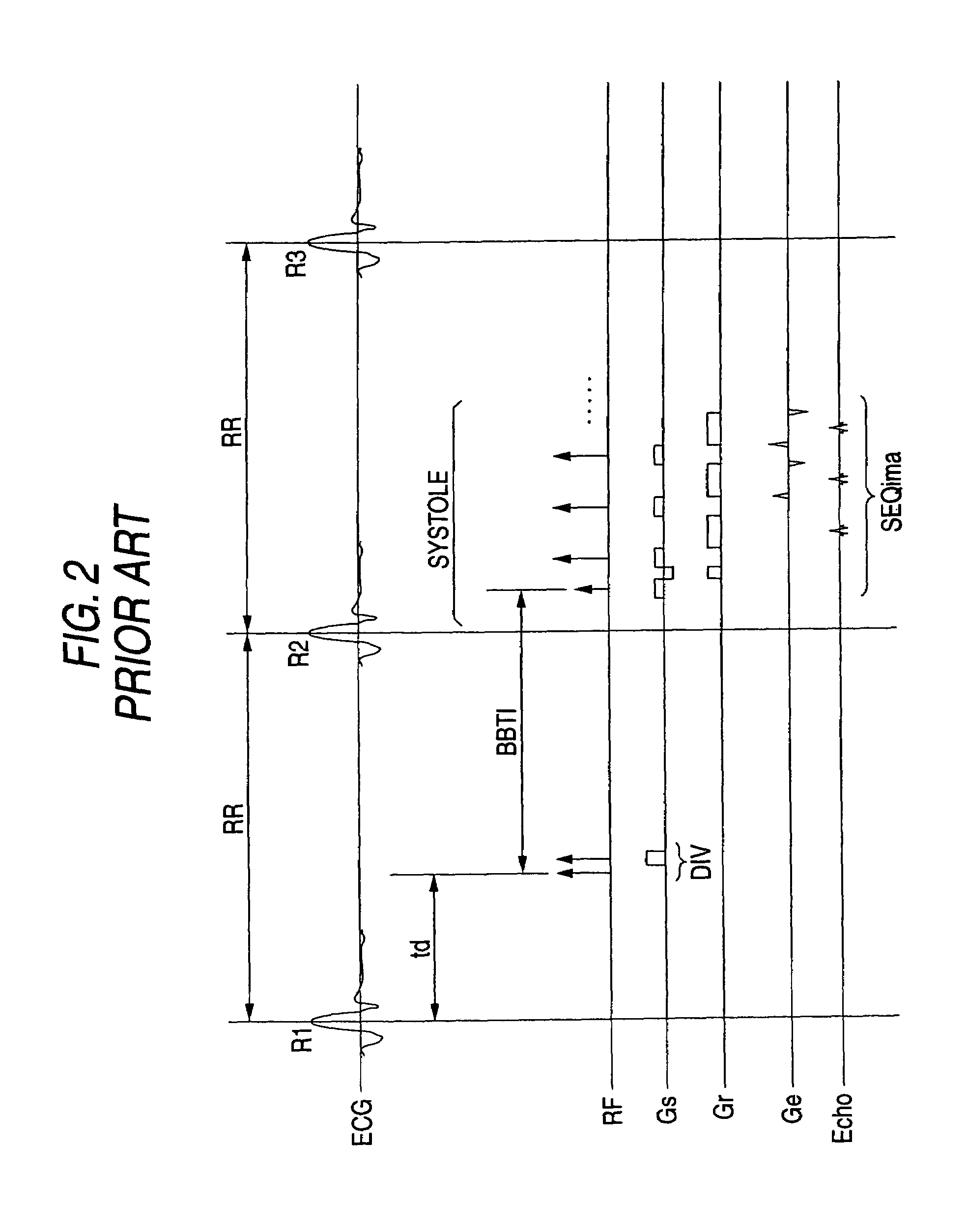Magnetic resonance imaging needing a long waiting time between pre-pulses and imaging pulse train
a technology of magnetic resonance imaging and waiting time, applied in the field of magnetic resonance imaging, can solve the problems of deteriorating image quality, difficult to acquire a series of images, and difficult to acquire images in the systole near an r-wave on time, so as to improve the image quality of an mr image, reduce the influence of artifacts, and improve the effect of image quality
- Summary
- Abstract
- Description
- Claims
- Application Information
AI Technical Summary
Benefits of technology
Problems solved by technology
Method used
Image
Examples
Embodiment Construction
[0036]The following description will describe one embodiment of the invention with reference to FIG. 4 through FIG. 6, FIG. 7A, and FIG. 7B.
[0037]FIG. 4 schematically shows an arrangement of a magnetic resonance imaging apparatus of this embodiment.
[0038]The magnetic resonance imaging apparatus includes a patient couch portion on which a subject P to be imaged (a person to be imaged) lies down, a static magnetic field generating portion for generating a static magnetic field, a gradient magnetic field generating portion for appending position information to the static magnetic field, a sending / receiving portion for sending and receiving high-frequency signals, a control and operational portion responsible for the control of an overall system and image reconstruction, an electrocardiogram measuring portion for measuring an ECG (electrocardiogram) signal as a signal representing cardiac temporal phases of the subject P to be imaged, and a breath-hold command portion for directing the ...
PUM
 Login to View More
Login to View More Abstract
Description
Claims
Application Information
 Login to View More
Login to View More - R&D
- Intellectual Property
- Life Sciences
- Materials
- Tech Scout
- Unparalleled Data Quality
- Higher Quality Content
- 60% Fewer Hallucinations
Browse by: Latest US Patents, China's latest patents, Technical Efficacy Thesaurus, Application Domain, Technology Topic, Popular Technical Reports.
© 2025 PatSnap. All rights reserved.Legal|Privacy policy|Modern Slavery Act Transparency Statement|Sitemap|About US| Contact US: help@patsnap.com



